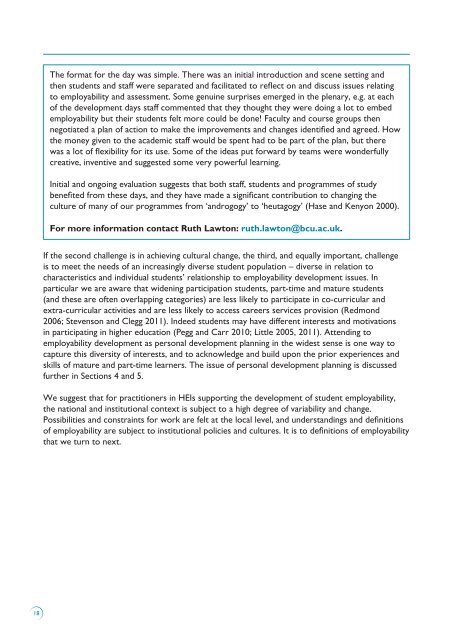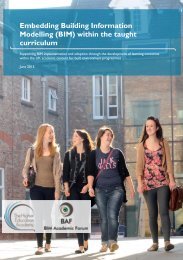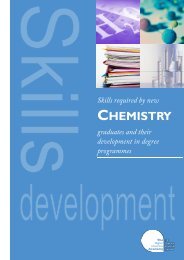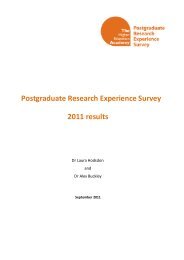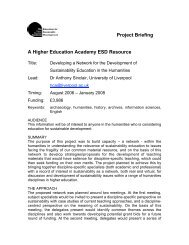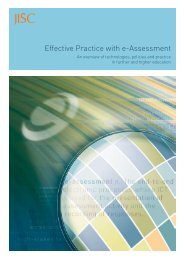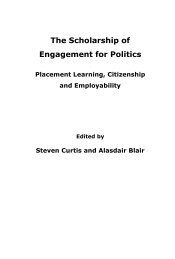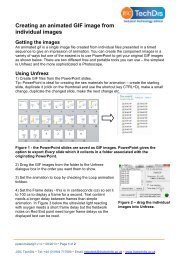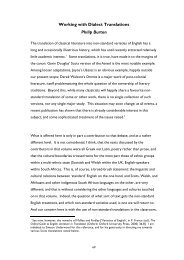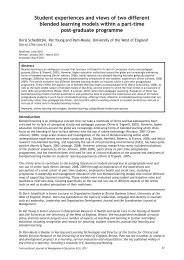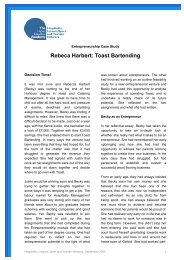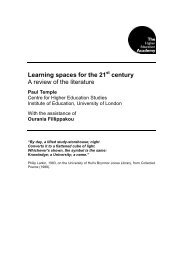Pedagogy for employability - Higher Education Academy
Pedagogy for employability - Higher Education Academy
Pedagogy for employability - Higher Education Academy
Create successful ePaper yourself
Turn your PDF publications into a flip-book with our unique Google optimized e-Paper software.
The <strong>for</strong>mat <strong>for</strong> the day was simple. There was an initial introduction and scene setting and<br />
then students and staff were separated and facilitated to reflect on and discuss issues relating<br />
to <strong>employability</strong> and assessment. Some genuine surprises emerged in the plenary, e.g. at each<br />
of the development days staff commented that they thought they were doing a lot to embed<br />
<strong>employability</strong> but their students felt more could be done! Faculty and course groups then<br />
negotiated a plan of action to make the improvements and changes identified and agreed. How<br />
the money given to the academic staff would be spent had to be part of the plan, but there<br />
was a lot of flexibility <strong>for</strong> its use. Some of the ideas put <strong>for</strong>ward by teams were wonderfully<br />
creative, inventive and suggested some very powerful learning.<br />
Initial and ongoing evaluation suggests that both staff, students and programmes of study<br />
benefited from these days, and they have made a significant contribution to changing the<br />
culture of many of our programmes from ‘androgogy’ to ‘heutagogy’ (Hase and Kenyon 2000).<br />
For more in<strong>for</strong>mation contact Ruth Lawton: ruth.lawton@bcu.ac.uk.<br />
If the second challenge is in achieving cultural change, the third, and equally important, challenge<br />
is to meet the needs of an increasingly diverse student population – diverse in relation to<br />
characteristics and individual students’ relationship to <strong>employability</strong> development issues. In<br />
particular we are aware that widening participation students, part-time and mature students<br />
(and these are often overlapping categories) are less likely to participate in co-curricular and<br />
extra-curricular activities and are less likely to access careers services provision (Redmond<br />
2006; Stevenson and Clegg 2011). Indeed students may have different interests and motivations<br />
in participating in higher education (Pegg and Carr 2010; Little 2005, 2011). Attending to<br />
<strong>employability</strong> development as personal development planning in the widest sense is one way to<br />
capture this diversity of interests, and to acknowledge and build upon the prior experiences and<br />
skills of mature and part-time learners. The issue of personal development planning is discussed<br />
further in Sections 4 and 5.<br />
We suggest that <strong>for</strong> practitioners in HEIs supporting the development of student <strong>employability</strong>,<br />
the national and institutional context is subject to a high degree of variability and change.<br />
Possibilities and constraints <strong>for</strong> work are felt at the local level, and understandings and definitions<br />
of <strong>employability</strong> are subject to institutional policies and cultures. It is to definitions of <strong>employability</strong><br />
that we turn to next.<br />
18


